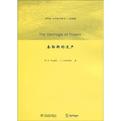泰勒斯的遗产
出版时间:2009-11 出版社:清华大学 作者:(美)安格林//兰贝克 页数:327
Tag标签:无
前言
在学校教书多年,当学生(特别是本科生)问有什么好的参考书时,我们所能推荐的似乎除了教材还是教材,而且不同教材之间的差别并不明显、特色也不鲜明。所以多年前我们就开始酝酿,希望为本科学生引进一些好的参考书,为此清华大学数学科学系的许多教授与清华大学出版社共同付出了很多心血。 这里首批推出的十余本图书,是从Springer出版社的多个系列丛书中精心挑选出来的。在丛书的筹划过程中,我们挑选图书最重要的标准并不是完美,而是有特色并包容各个学派(有些书甚至有争议,比如从数学上看也许不够严格),其出发点是希望我们的学生能够吸纳百家之长;同时,在价格方面,我们也做了很多工作,以使得本系列丛书的价格能让更多学校和学生接受,使得更多学生能够从中受益。 本系列图书按其定位,大体有如下四种类型(一本书可以属于多类,但这里限于篇幅不能一一介绍)。
内容概要
本书以专题方式讲述数学的历史和数学的哲学(非史论型著作),每个专题相对独立。全书以数学历史为线索以数学为内容主体,以数学哲学为引申,易读、易懂,是本科生学习数学过程中非常好的课外读物。
书籍目录
Preface0 IntroductionPART Ⅰ: History and Philosophy of Mathematics 1 Egyptian Mathematics 2 Scales of Notation 3 Prime Numbers 4 Sumerian-Babylonian Mathematics 5 More about Mesopotamian Mathematics 6 The Dawn of Greek Mathematics 7 Pythagoras and His School 8 Perfect Numbers 9 Regular Polyhedra 10 The Crisis of Incommensurables 11 From Heraclitus to Democritus 12 Mathematics in Athens 13 Plato and Aristotle on Mathematics 14 Constructions with Ruler and Compass 15 The Impossibility of Solving the Classical Problems 16 Euclid 17 Non-Euclidean Geometry and Hilbert's Axioms 18 Alexandria from 300 BC to 200 BC 19 Archimedes 20 Alexandria from 200 BC to 500 AD 21 Mathematics in China and India 22 Mathematics in Islamic Countries 23 New Beginnings in Europe 24 Mathematics in the Renaissance 25 The Cubic and Quartic Equations 26 Renaissance Mathematics Continued 27 The Seventeenth Century in France 28 The Seventeenth Century Continued 29 Leibniz 30 The Eighteenth Century 31 The Law of Quadratic ReciprocityPART Ⅱ: Foundations of Mathematics 1 The Number System 2 Natural Numbers (Peano's Approach) 3 The Integers ……ReferencesIndex
章节摘录
Pythagoras and His School Pythagoras (570-500 BC) was born in Samoa, a Greek island off the coast of what is now Turkey. According to ancient sources (Iamblichus, Porphyry and Diogenes Liberties), he traveled and studied in the Persian empire, which extended then from northern Greece to the Indus Valley and included ancient Mesopotamia. We know (Plimpton 322) that the Babyloni- ans understood what is now called the theorem of Pythagoras, although the latter may have given the first proof. Pythagoras may have learned the theory of Pythagorean triangles from the Babylonians. According to the above mentioned sources, Pythagoras also studied under the Zoroastrian priests, the so-called Magi. However, judging from his belief in reincarnation and his vegetarianism, it is more likely that he was influenced by Hindu tradition. Even his mathematics has an Indian flavour. About 525 BC, Pythagoras emigrated to Croton (modern Crotone) in southern Italy, where he founded a society, half-way between a political party and a religious cult, which came to be known as the Pythagorean Brotherhood. Some members of this society were admitted to an inner circle consisting of the so-called mathematicians. The word mathematics was in fact introduced by Pythagoras. The first part of this word is an old Indo-European root, related to the English word mind. The modern meaning of mathematics is due to Aristotle.
图书封面
图书标签Tags
无
评论、评分、阅读与下载
用户评论 (总计5条)
- 书还不错吧,属于介绍数学发展史的科普读物,平时闲来无事随便翻翻。以后可以给侄子看。
- 其实这本书是科普性质的读物,虽然很薄但是很有意思
- 读了少部分,质量纸张都不错
- 书很好,就是掉页了
- 没有太多内涵,没事时候看的玩玩而已
